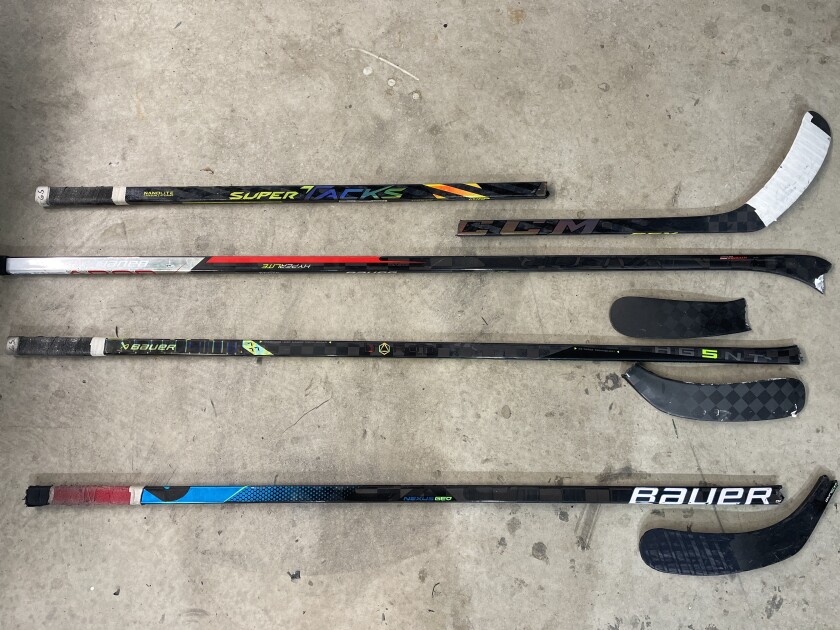Signs You Need to Replace Your Hockey Stick
Your hockey stick is an extension of yourself on the ice. It dictates your shot power, passing accuracy, and puck control. But like any piece of equipment, sticks don't last forever. Holding onto a worn-out stick can hinder your performance and even lead to injuries.
So, how do you know when it's time to say goodbye to your stick? Here are four key signs:
1. Your hockey stick has cracks or splinters
This is the most obvious indicator. Cracks, chips, or deep gouges in the shaft compromise the stick's integrity. A single, small crack might seem harmless, but it can quickly worsen under pressure, leading to a mid-game snap and a potential injury. Similarly, a chipped blade throws off your puck feel and passing precision. Don't risk it – a broken stick can ruin your game.
Expert Tip: Before every game or practice, inspect your stick closely for cracks, chips, or soft spots in the shaft or blade. A small crack can quickly become a major break during play, so it's important to identify and address any damage right away. Make sure you always have a backup stick handy.
2. Your hockey stick has loss of pop
The "pop" refers to the responsiveness and energy transfer of the stick during shots. A stick can lose its pop over time as the materials degrade, making your shots sluggish and reducing their power and accuracy. If you notice your slapshots lacking their usual zip, or if you're struggling to generate good power on your passes, it might be time for a new stick with a fresh pop.
Expert Tip: Your stick may take a beating on the ice, but outside the rink, handle it with care. Stand it upright when storing. Don't leave your stick leaning against a wall or laying flat on the ground. This can put stress on the shaft and cause it to bend or warp.
3. Your hockey stick has blade wear
The blade is the business end of your stick, and it takes a beating throughout the game. Constant puck contact wears down the heel and toe of the blade, damaging its handling and shooting abilities. A worn blade might make it harder to control the puck, affecting your stickhandling and making clean passes difficult. If you notice more and more fumbled passes and missed shots, it’s likely time for a new stick.
Expert Tip: Taping your blade is a crucial step to keeping it in good shape. Each hockey player tapes their stick differently, but the tape works to protect the blade from expected wear and tear. Regularly retaping your stick can give the stick better grip and protect it from impacts on the ice.
4. Your hockey stick has reduced feel
A good hockey stick provides a direct connection between you and the puck. As your stick ages, the materials can lose their responsiveness, making it harder to feel the puck on your blade. This reduced feel can make it difficult to control the puck with precision, impacting your overall play.
Expert Tip: How you store your hockey stick can affect how quickly the materials degrade. Storing in extreme temperatures, either hot or cold, will cause the materials to break down more quickly and can warp your stick and lessen the length of it's life. Do not leave your stick in wet areas or let it sit in water. Moisture is the fastest way to weaken your stick's integrity.
Check out: Top 5 Hockey Sticks for 2024
Now that you’ve decided it's time for a replacement, the prospect of finding and buying a new stick can be daunting. Luckily, SidelineSwap has a great selection of new and gently used sticks that guarantee lower prices without sacrificing quality.

